Renew Your Glow With Microneedling in Queens
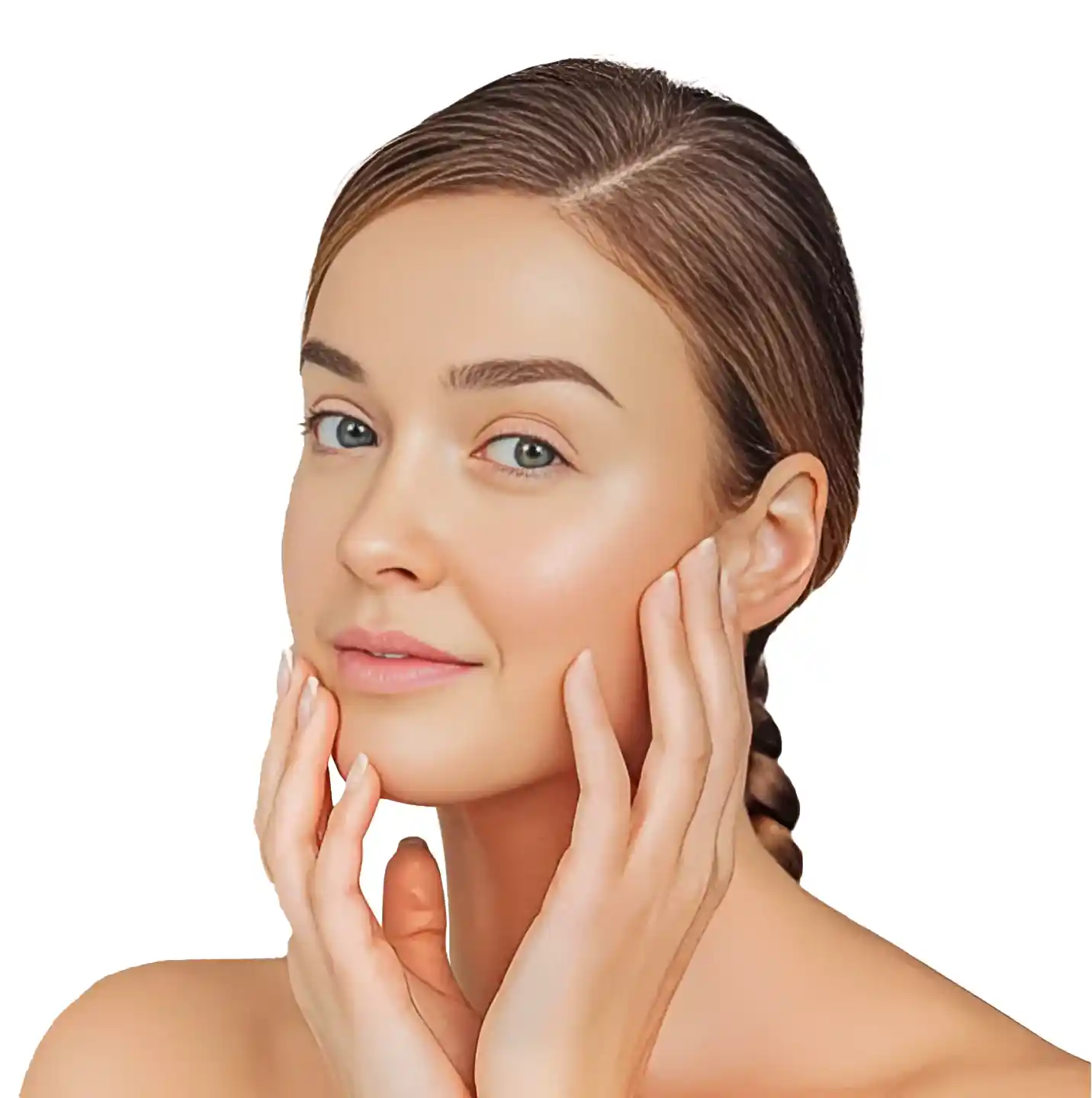
What is microneedling, and how does it work?
Microneedling, also known as collagen induction therapy, is a cosmetic procedure that involves creating controlled micro-injuries in the skin using a device with fine needles. At Adult and Pediatric Dermatology in Forest Hills, Queens, the procedure is performed under the guidance of Dr. Michael Paltiel, MD, a board-certified dermatologist with over 20 years of experience in cosmetic treatments. These tiny punctures trigger your body’s natural healing response, stimulating the production of collagen and elastin, the proteins that keep skin firm and smooth. By enhancing collagen production, microneedling helps repair skin imperfections and improve overall skin texture. The treatment is minimally invasive and is virtually pain-free with the use of numbing cream.
What skin concerns can
microneedling improve?
Microneedling is a versatile treatment that can address a range of skin concerns. At our Forest Hills clinic, we often recommend microneedling to help improve or reduce:
- Acne scars and other scars
- Fine lines and wrinkles
- Uneven skin tone or sun spots
- Large pores & skin texture
- Stretch marks
- Reduced skin elasticity
In short, microneedling is effective for scars, wrinkles, pores, spots, and general skin rejuvenation. It’s a great option for those seeking overall improvement in skin tone and texture. During your consultation, we’ll evaluate your skin concerns and confirm that microneedling is the appropriate treatment (our practice offers many cosmetic procedures, so we’ll ensure this is the best fit for your needs).
Special Offer
10% OFF
Your First Microneedling Treatment. Use Promo Code: AP10
Read Our Reviews
Posted on
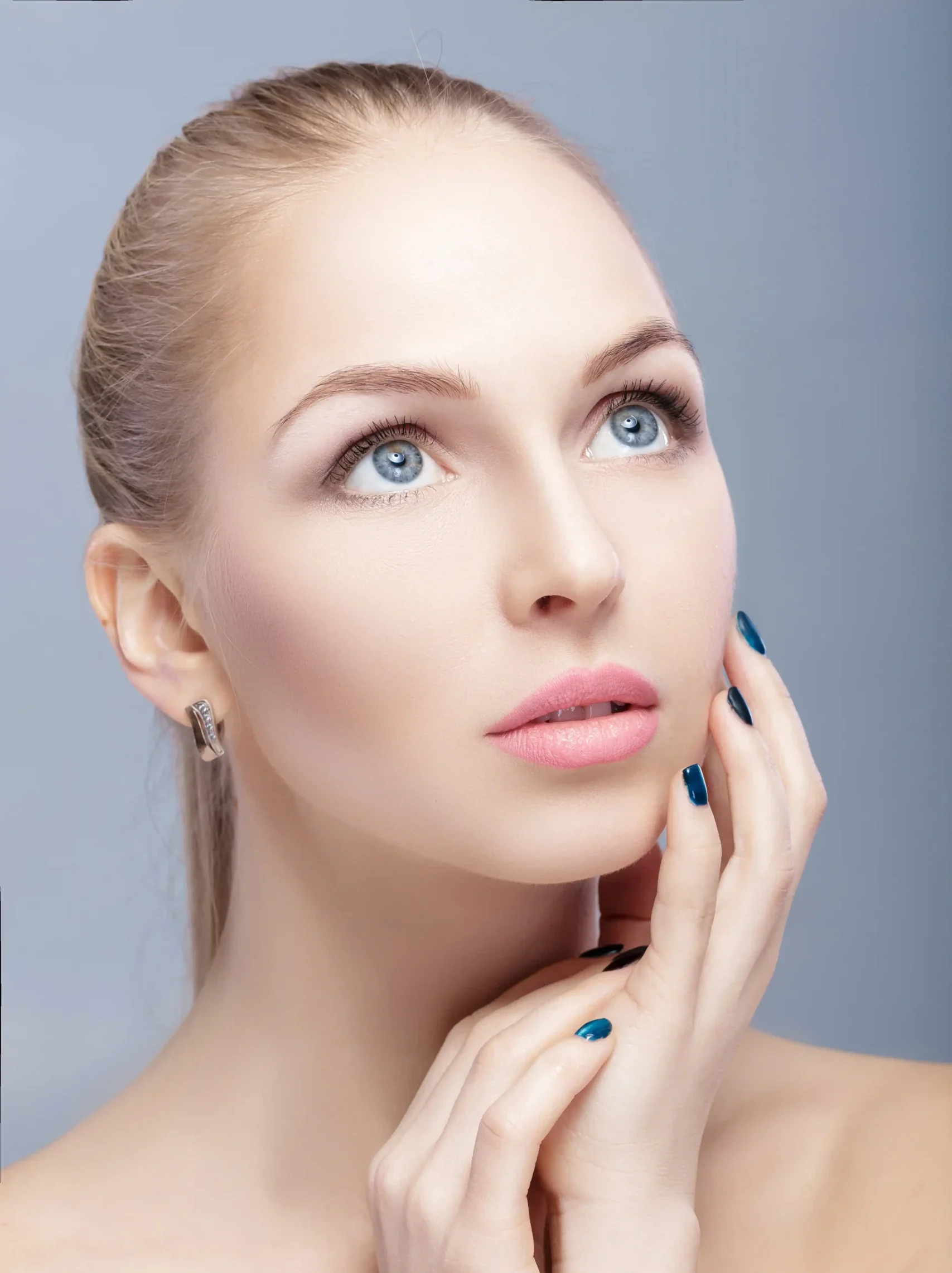
How do I prepare for a
microneedling treatment?
Preparing for microneedling is straightforward. Our dermatology team will give you specific instructions, but generally you should:
- Avoid certain products: Stop using any strong topical treatments (like retinoids, exfoliants, or acne medications) for a few days before your session, as these can irritate the skin.
- Stay out of the sun: Try to minimize sun exposure and do not use tanning beds in the week leading up to treatment. Sunburned or overly tanned skin cannot be treated with microneedling for safety.
- Consult on medications: Inform us of any prescription blood thinners or supplements you’re taking. We may advise pausing blood thinners (with your prescribing doctor’s approval) before treatment to reduce the risk of bruising.
- Come with a clean face: On the day of your appointment, arrive with a clean, make-up-free face. We will cleanse your skin thoroughly before the procedure.
Also, if you have any active skin infection (like open acne cysts or cold sores), let us know – we may reschedule until it’s resolved. Overall, microneedling requires minimal prep, but following these guidelines will ensure the treatment goes smoothly and safely.
Our Microneedling Gallery: Before and After
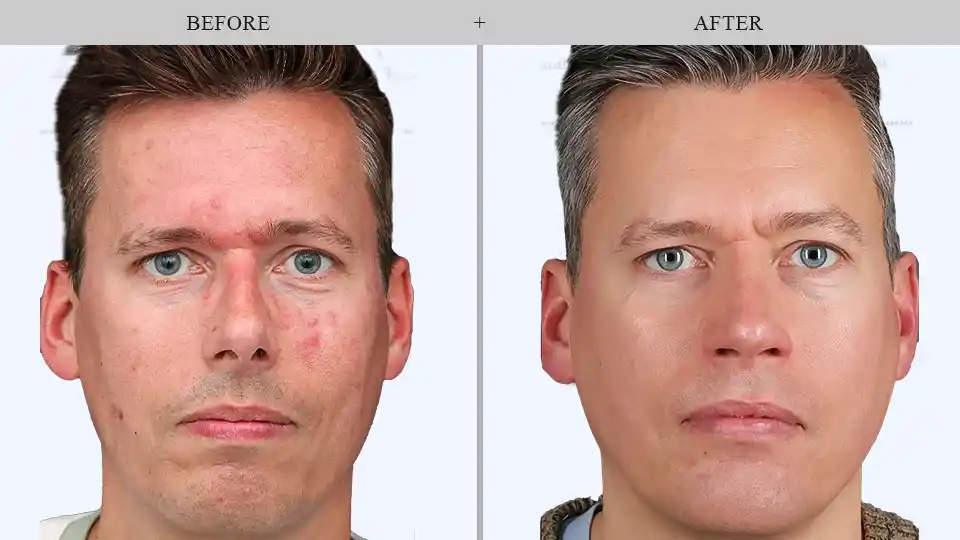
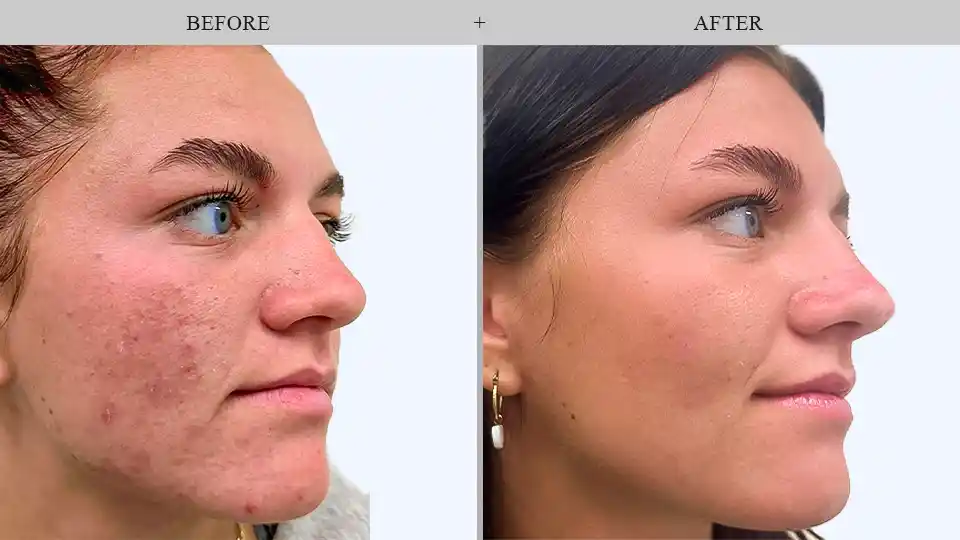
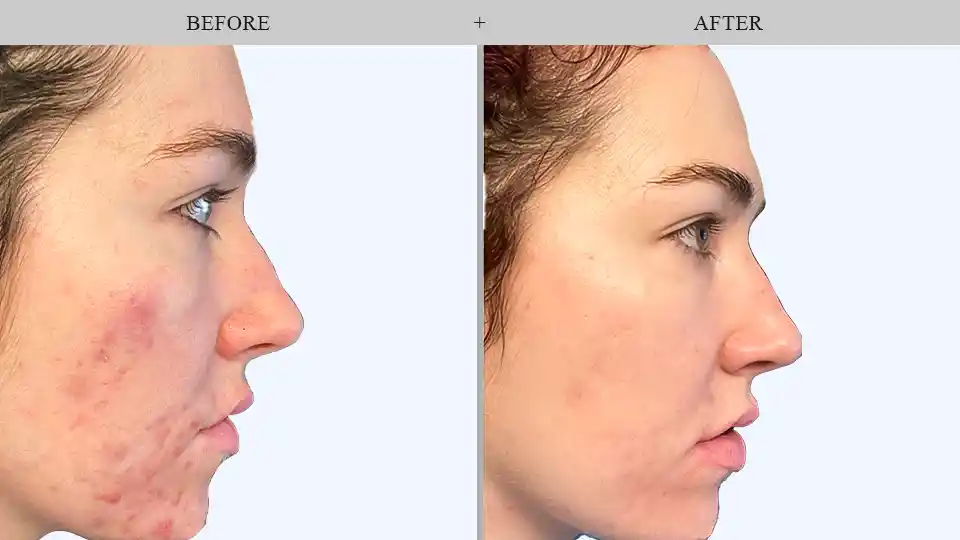
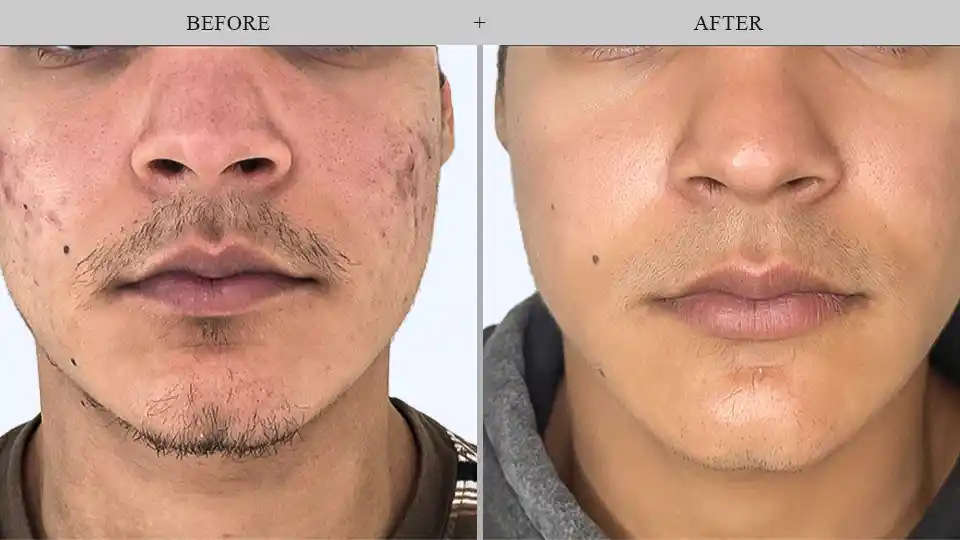
How many microneedling sessions
will I need?
- Initial series: 3 to 6 microneedling sessions, spaced about 4 weeks apart. Treatments spaced a month apart allow new collagen to form between sessions while continuously stimulating further improvement. For example, acne scars or stretch marks may need 4-6 sessions, whereas minor texture or pore concerns might be well-addressed with 3 sessions.
- Periodic maintenance: Once you’ve achieved your desired result, you might do a maintenance microneedling treatment every 6–12 months. Maintenance helps sustain collagen production gains and keeps your skin looking fresh. This is optional, but many patients choose to come in annually for a “booster” session.
- Adjustment for conditions: If we are treating deeper acne scarring or more severe wrinkles, we may combine microneedling with other therapies (like PRP or fractional lasers) and adjust the total number of sessions accordingly. We customize the plan to you.
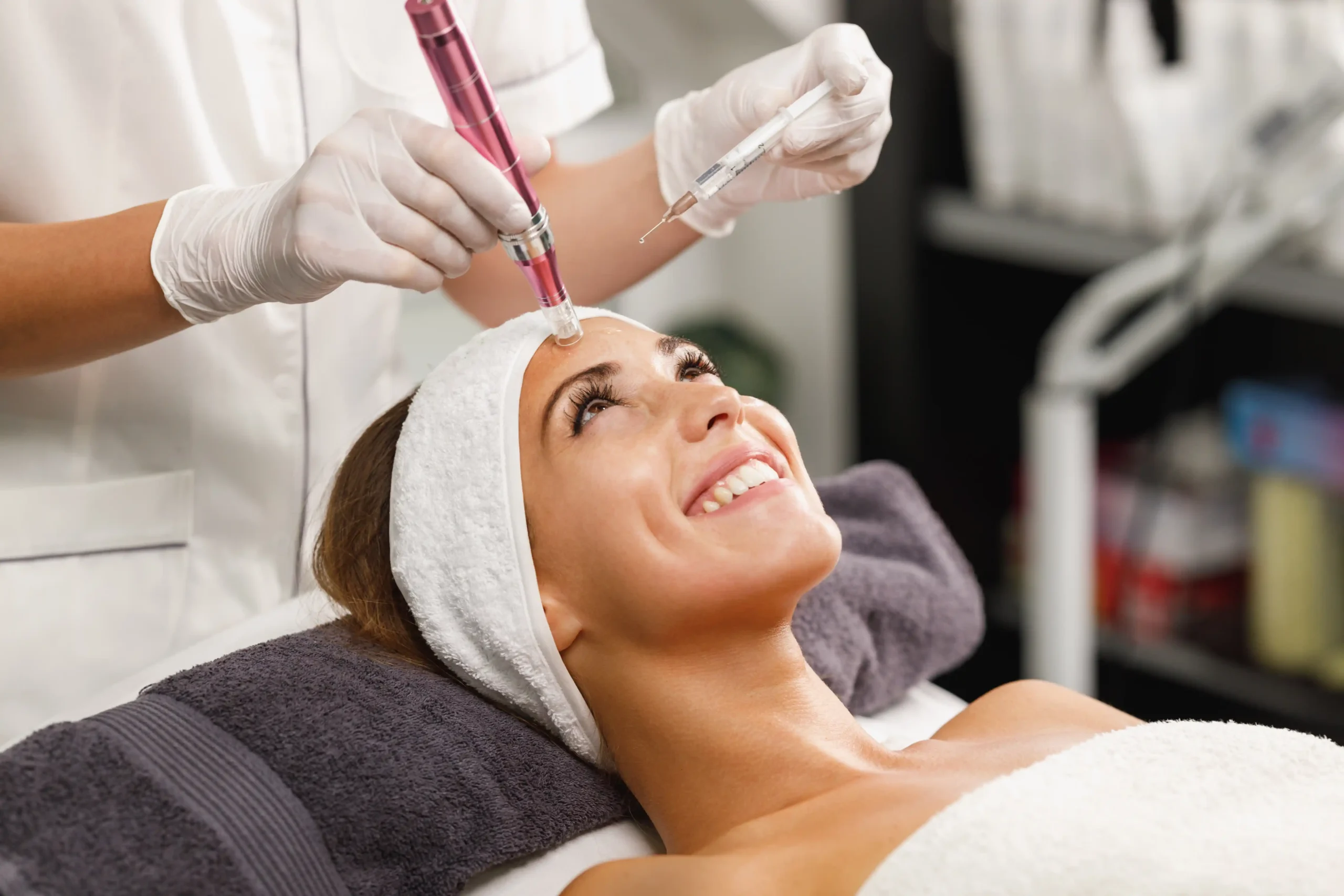
Choose Your Provider
Meet our team of board-certified specialists dedicated to your skin health and beauty

Michael Paltiel,MD
Dermatology

Zina Goldvekht, PA-C
Physician Assistant

Aleksey Babakhanov, FNP
Family Nurse Practitioner

John Perrotti, MD
Plastic Surgery

Irma Meni
Cosmetologist
Frequently Asked Questions
One of the great advantages of microneedling is that it has very little downtime. Immediately after the procedure, it’s normal to experience some redness and mild swelling, similar to a sunburn effect, for a day or two. You may also have slight pinpoint bleeding or bruising in areas with very sensitive skin – this usually subsides quickly. Common side effects are:
- Redness and warmth: Your skin will likely be pinkish/red and feel warm for 24-48 hours. This is a sign of the inflammatory healing process kicking in.
- Minor peeling or flaking: As the micro-injuries heal, a bit of dry skin or flakiness can occur in the days after treatment. This is simply the old skin cells shedding as new cells come through.
- Sensitivity: You should avoid applying makeup or using harsh skincare products for about 24 hours post-treatment, as your skin will be more sensitive during this initial healing. We’ll recommend gentle cleansers and moisturizers to use.
- Low infection risk: Microneedling is very safe when performed in a medical setting. We use sterile equipment and proper technique. As long as post-care guidelines are followed (like not touching or picking at the face unnecessarily), infection is exceedingly rare.
Overall, microneedling is considered safe for all skin types. Unlike more aggressive lasers or deep peels, the risk of hyperpigmentation on darker skin tones is low. Microneedling is a preferred treatment for acne scars in ethnic skin because of its safety profile. All side effects are temporary. Within a couple of days, you can return to your normal skincare routine.
